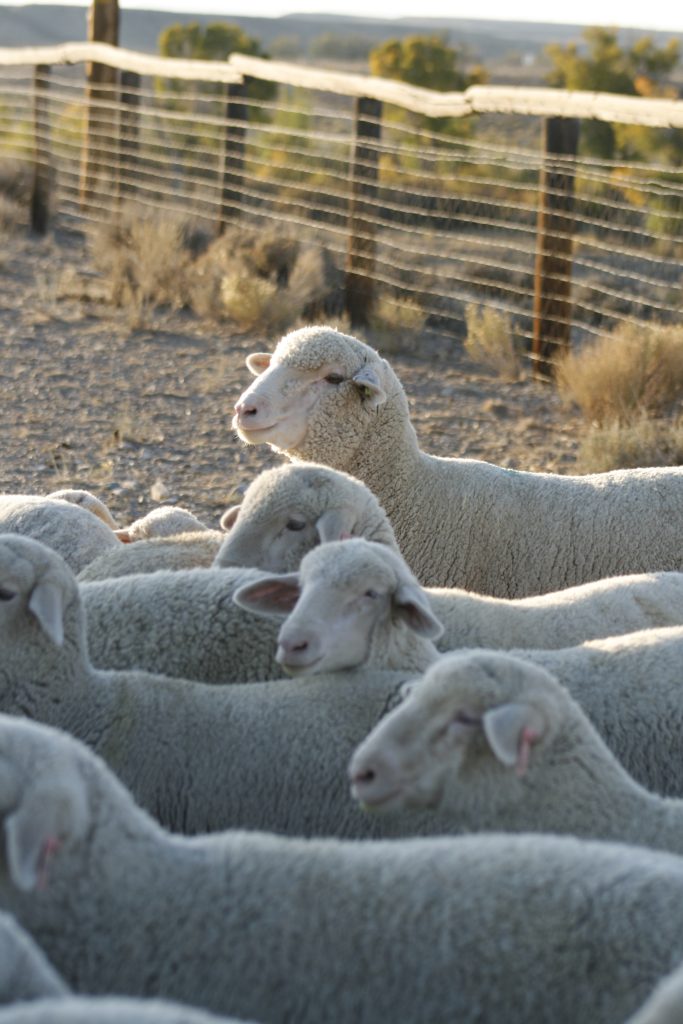International Markets: USMEF experts provide update on imports and exports of U.S. sheep and lamb

U.S. Meat Export Federation (USMEF) Director of Trade Analysis Jessica Spreitzer and USMEF Director of Export Services Courtney Heller were featured as guest speakers during a University of Minnesota webinar titled “Lamb: International Trade and Economics” on Feb. 12.
The pair presented information on global lamb trade from USMEF’s year-end report, released on Feb. 11, while highlighting data on U.S. imports and exports.
Lamb imports
To begin, Spreitzer notes the U.S. is one of the top four importers of lamb and mutton, alongside the European Union (EU), the United Kingdom (UK) and China, which is the major driver in the global marketplace.
She went on to explain Australia and New Zealand provide the large majority of supplies moving into China and the U.S., while the EU and UK are primarily supplied by each other.
Moving closer to home, Spreitzer says 2023 U.S. lamb imports totaled 113,545 metric tons – the lowest since 2019.
“As I mentioned, the U.S. is one of the top importers of lamb, with the majority of supplies coming from Australia and New Zealand and minimal volumes coming from Chile and Uruguay,” Spreitzer says. “We have also seen some momentum picking up from Ireland and the UK.”
American exports
With this, the majority of the discussion was focused on American lamb exports.
“In 2023, U.S. lamb muscle cut exports totaled 4.4 million pounds, at a value of $11.9 million, down 10 percent from the previous year,” Spreitzer remarks.
She notes the Caribbean and Dominican Republic remain the nation’s top export market, although Mexico has recently rebounded as a leading export destination as well.
“We saw strong growth in the Caribbean and Dominican Republic in 2022 as they both saw a strong rebound in tourism,” she says. “Mexico is our second largest market, followed by Canada and Central America. Guatemala and Panama are growing markets, and we have seen increased interest from the Association of Southeast Asian Nations and the Philippines.”
Niche markets
Following a question from a webinar attendee, Spreitzer explains why the U.S. exports product despite being one of the top four importers of lamb and mutton.
“The U.S. is a niche exporter of high-quality lamb,” she states, noting the U.S. is able to fill demand for other nations’ specific wants and needs, while those nations, in return, fill needs for American markets.
“A good example of this is the product we export to Mexico, where there is demand for heads and necks for barbacoa and birria tacos,” she continues. “It is a major consumption pattern there and really important to their food culture, so we fill supply for a product that is not demanded in the U.S.”
Spreitzer outlines several other niche markets the U.S. supplies, including sending middle meats to the Middle East; cap-off racks, legs, shanks, square-cut shoulders and variety meats to Canada; shoulders, ribs, frenched racks, legs, breast bones and trimmings to the Philippines and frenched racks, bone-in and boneless legs, shoulders, shanks and carcasses to Central America.
“American lamb is very different from other lamb around the world,” adds Heller. “U.S. lamb serves a niche market and provides international marketing attributes like taste and cut size, muscle-to-bone ratio and lamb quality.”
She further explains, “American lamb has a milder, less gamey taste and larger cut size due to genetic selection and grain feeding. We are different in how we choose our genetics and growth goals, so our primary production is focused on meat breeds for export versus the wool breeds raised by our competitors.”
Because U.S. producers place an emphasis on raising a high-quality meat product, lambs are usually fed out for 30 to 45 days on a high-quality grain diet prior to harvest, resulting in superior muscling, marbling and flank streaking.
“Therefore, around 90 percent of U.S. lamb quality grades Choice or Prime, indicating a more youthful carcass and setting us apart from our competitive markets,” Heller concludes.
Trade forecast
To wrap up the presentation, Spreitzer discusses USMEF’s export forecast for the next five years.
She notes the federation is optimistic in its outlook because the U.S. has seen promising potential for growth in some of its smaller export markets.
She explains, “In 2010, 11.2 percent of U.S. lamb production was exported, and a high of 14.1 percent of lamb production was exported in 2011. In 2018-19, the share was 4.2 percent, and this dropped to 2.6 percent in 2020, then bumped back up to 2.8 percent in 2021. The share rebounded again to 4.7 percent in 2022, then was 2.2 percent in 2023.”
“With this downward trend in U.S. lamb production, a larger share will have to be exported to reach forecasted growth with the share of production exported reaching over five percent in 2027-28,” she concluded.
Hannah Bugas is the managing editor of the Wyoming Livestock Roundup. Send comments on this article to roundup@wylr.net.





